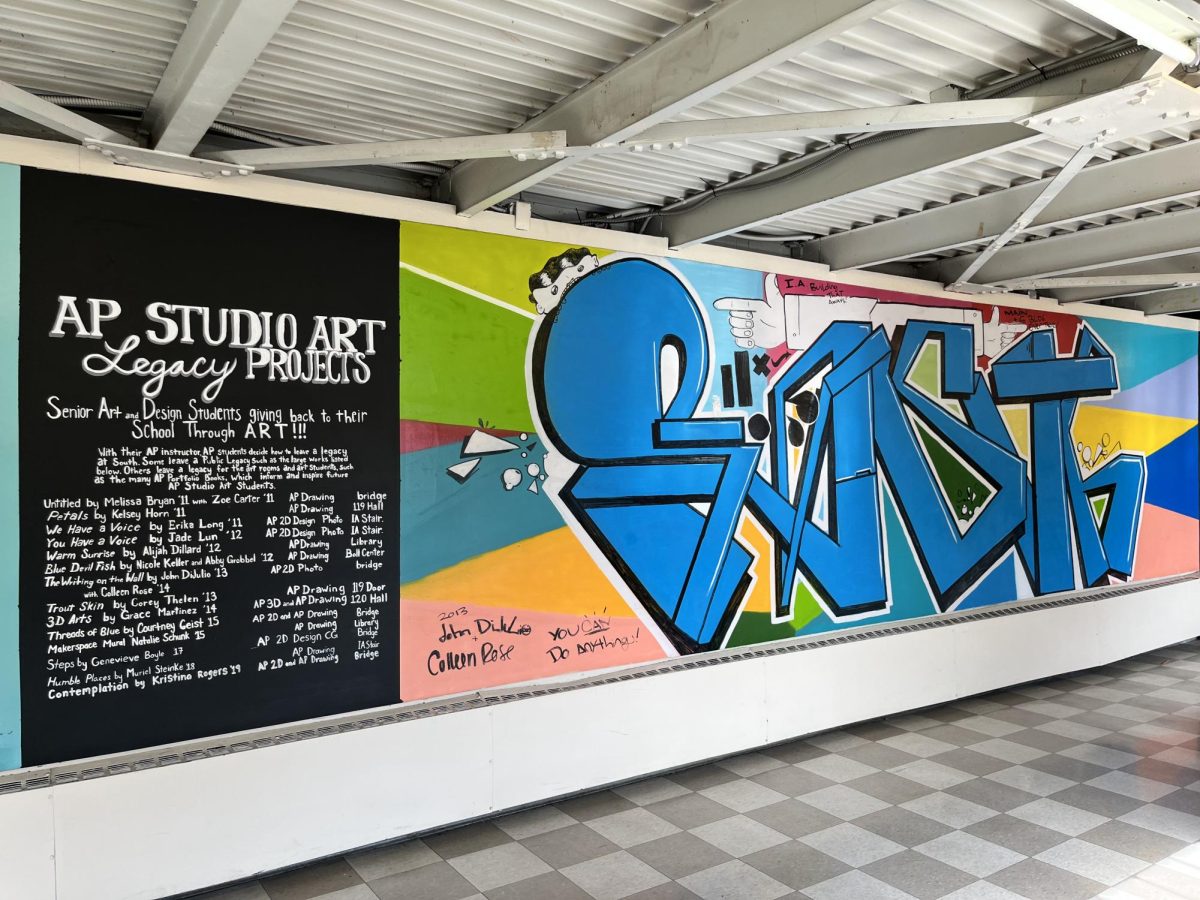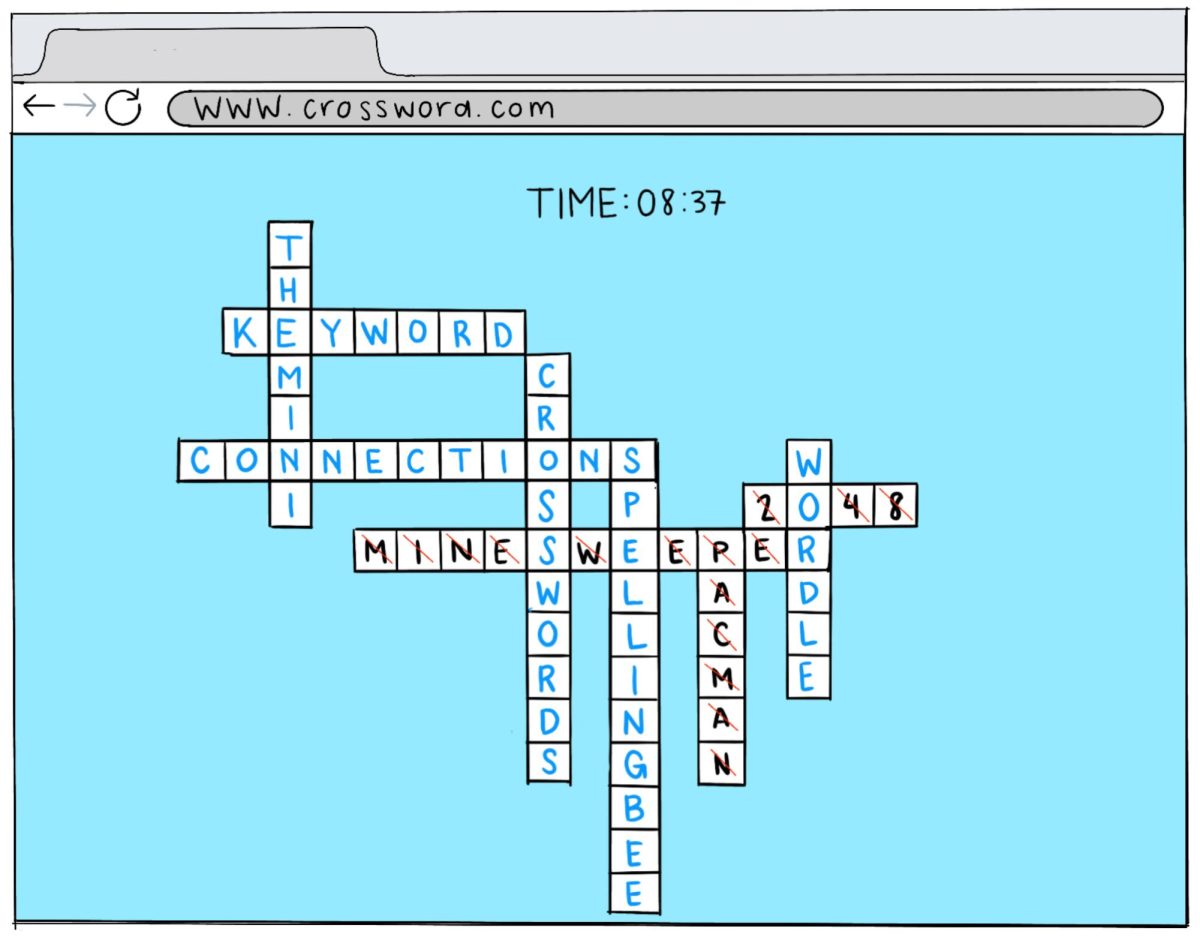As computers lie open on desks and lessons come to a close, odds are, wandering minds of students will venture toward online games to fill the rest of class time. Whether it’s New York Times Games such as the Connections, Wordle, Spelling Bee, or other brain-stimulating puzzles like the Washington Post Crossword, the anticipation of finishing the daily challenge and comparing it to those of previous days keeps people consistently coming back. The satisfaction of sending friends the grid of Wordle squares with the number of attempts it took or making a mental note of the seconds shaved off of last Thursday’s crossword time helps fuel the recent gravitation in younger audiences toward these mind-twisters.
For Peter Smith ’24, the quickness of the games allows for a momentary brain break during class, and the satisfaction of completion allows for a nice cure for boredom that would otherwise be much more prevalent.
“It is only positive because those are quick,” Smith said. “They don’t take away from (class); I don’t get too distracted.”
The shift in the games is also quite noticeable, with audiences seeming to lean toward younger generations when compared to audiences years ago.
“I feel like the New York Times games are kind of an example of how it shifted to younger audiences because they made it short,” Smith said. “(More young people playing them) might have to do with [them] being quick and it feels useful to do [play them]. It feels like I’m smart.”
While the speed of the online puzzles certainly helps keep players engaged and coming back for more, so does their certainty. Because they only offer one solution for each clue, players don’t have to stress about ambiguity.
“The world is a very complicated place and has very complicated problems,” Washington Post Sunday Crossword Editor Evan Birnholz said. “But with the puzzle, it’s something that has a very definite solution, an answer that you can figure out.”
With those problems, stress inevitably follows, especially for students on test days or during difficult assignments.
“It helps deal with the class. It’s always nice to unplug a little bit, especially after any kind of assessment.” Physics and astronomy teacher Troy Hernandez said.
Even though technologyhas helped further the usage of online games in class, there have always been games played to pass the time. Formerly popular games like Minesweeper and PacMan are much more mechanical when compared to the more logical ones that are more popular today.
“I don’t think there’s nothing wrong with games like Pac-Man, they’ve been around for decades and decades for a reason. With crosswords, the great thing about them is they change all the time,” Birnholz said. “The answers change, the clues change, the themes change, it’s always different, it’s a different challenge that you’re presented with.”
The challenge offered by these games helps students avoid the rabbit hole of mindless scrolling, even if it’s only for a few minutes at the end of class.
“Games like this just keep you sharp, but not too much. Just enough (to keep people engaged).” Hernandez said. “It’s better than just scrolling and looking at other people’s stuff.”
Even though the sought-after challenge in crosswords, The Connections, Wordle, and others is context-based, they always seem to have the perfect balance between difficulty and ease that keeps people coming back the next day to see what’s in store.
“I really relish as a (crossword) constructor just to give people like this challenge that can help them escape for 10, 15, 20 minutes, an hour, however long. It’s a very valuable experience,” Birnholz said. “It’s not meant to be so much like a knowledge test or a trivia test as much as it is about just the amusement you get from wordplay.”











































































